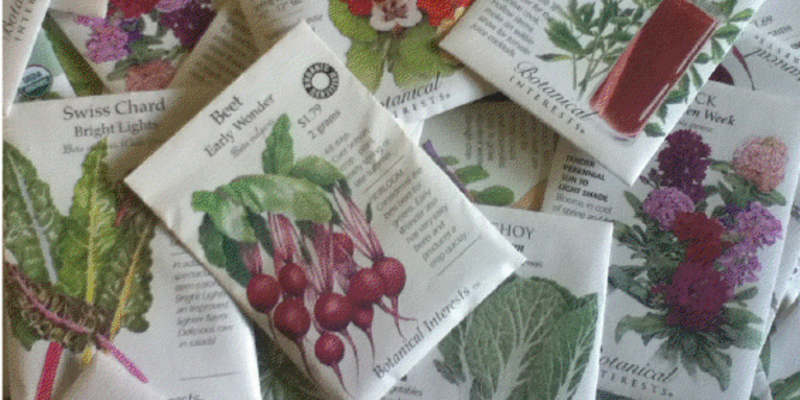

There are a couple of big benefits to growing from seed. First, it allows you the opportunity to grow varieties of plants that may not be easily found in stores. Also, you can extend and even increase the harvest by staggering seeding dates. Before you do, though, here are a few tips for ensuring success:
1. Recognize the time commitment needed. You'll need to tend to the seedlings on a daily basis. One of the most common mistakes you can make is letting your seeds dry out during the germination process. Dedicate the time and follow general seed guidelines on the seed packet, and you will be rewarded with a grand harvest.
2. Buy quality seed. Great produce and flowers start with great seeds. Use a quality seed purveyor, such as Botanical Interest (found in local stores). They carry organic seed that performs with a high rate of germination. Each seed packet also contains great “how to” information, as well as history of seed and sometimes even culinary tips. This goes above and beyond many other retail seed lines.

3. Use quality seed soil. Seed soil is important, so don’t skimp here. Seed soil is lightweight and drains well. This encourages healthy seedlings that can grow with ease and not rot in wet heavy soil.
4. Know when to sow. Use the estimated first frost date to guide your seeding calendar. As an example, our local Clemson Extension office pegs November 12 as its estimated date for a 50/50 chance of first frost in the Charleston area. I will use this date and count backwards the amount of time that a particular plant requires to mature, adding a few additional weeks to harvest. This helps to ensure proper soil temperature for transplanting your sprouts.
5. Regulate your lighting. This is important; your seedlings will become weak if they do not receive enough light. I prefer to sow my seeds indoors. I can regulate the optimal temperature (generally between 65 and 75 degrees) and lighting by using inexpensive 40-watt fluorescent tubes, 48 inches in length. Place bulbs close 4-6 inches above seeding trays.

6. Transplant them correctly. After your seedlings' second sets of leaves appear, it's time to transplant. Transplant into a 4-inch pot, filled with rich potting soil. Once your seedling fills the pot, it is time to transplant into the well-amended garden soil.
